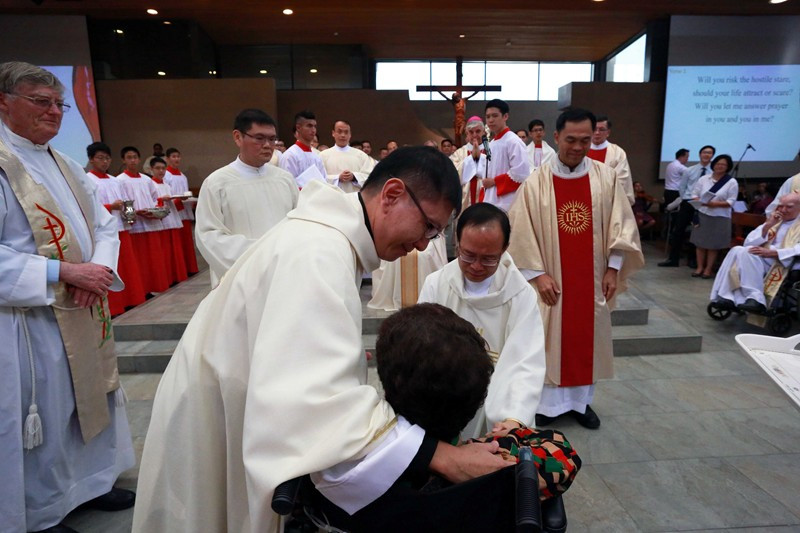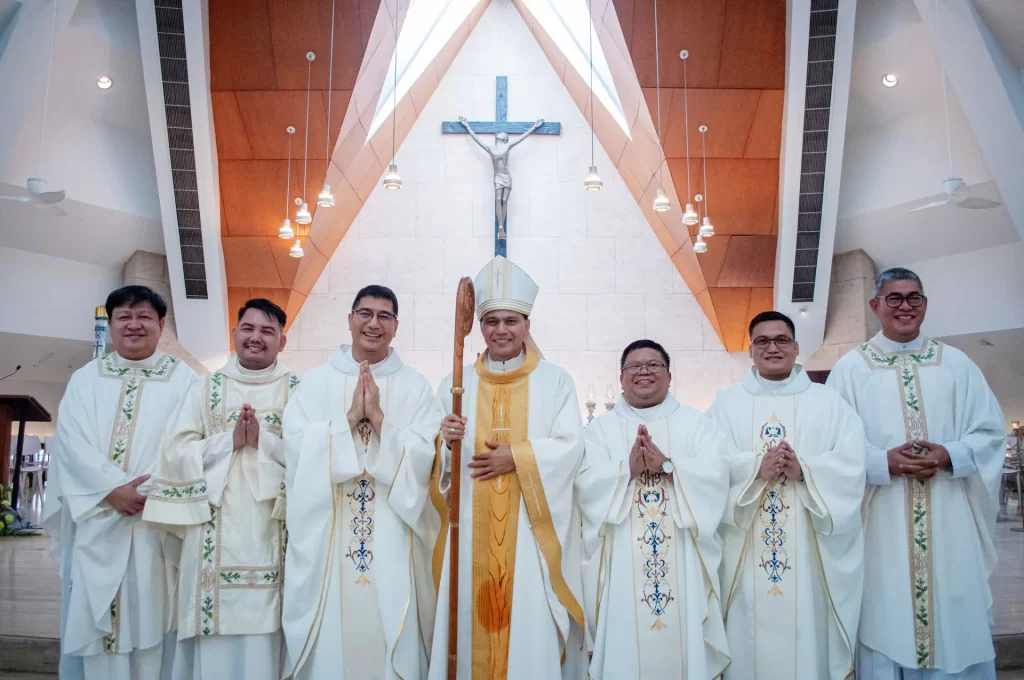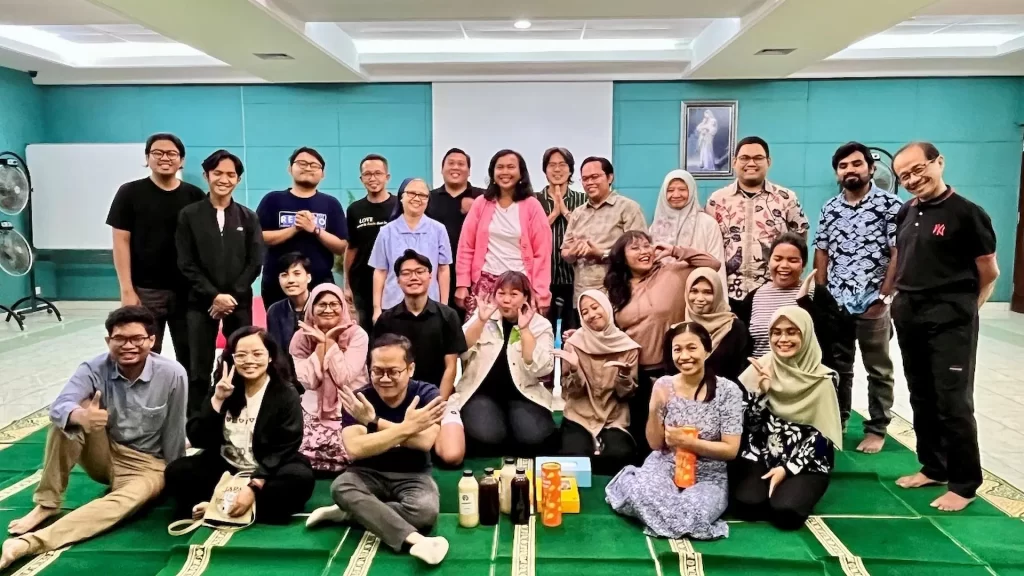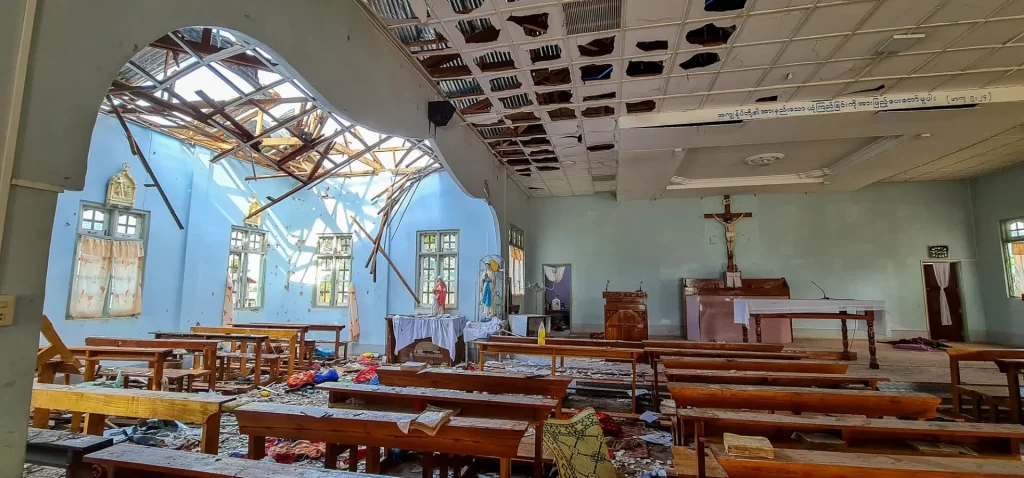In the front row pews during evening mass at the Church of St Ignatius in Singapore on July 26, family members gathered to celebrate the ordination to the priesthood of two not-so-young Jesuits. It would be typical to see both men seated amidst their respective families ready in turn to offer them up to the rest of the Church. What was not so typical was that it was just one family – with both Jesuits seated on either side of the same mother, and among the same siblings and relatives – supporting them into the service of ordained ministry.
Born more than a decade apart and entering the Society of Jesus at different times, brothers Matthew and Gregory Tan SJ were that evening sharing the joy of their joint ordination.
The church was at maximum capacity with a crowd around the entrance as the congregation waited eagerly for the procession of bishops, priests and deacons to enter the church. Along with Singapore Archbishop William Goh was Monsignor Enrique Figaredo SJ, Apostolic Prefect of Battambang in Cambodia – special guest of Deacon Matthew who had served his Regency in Cambodia – as well as Fr Colin Tan SJ, Superior of the Malaysia-Singapore Region of the Society of Jesus; Fr Brendan Byrne SJ, Deacon Gregory’s rector at the Jesuit Theological College in Melbourne, and a host of other clergy and Religious.
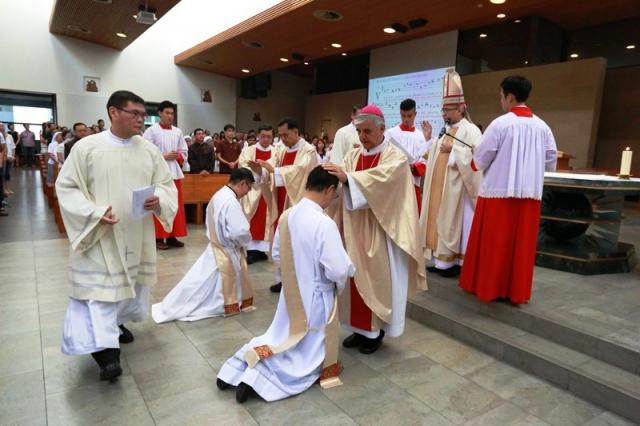
When asked about how he felt, the newly ordained Fr Gregory explained, “I am relieved most of all, as there was a lot to do in preparing myself in the last few weeks; I am relieved that it went well and that I’m actually here. You don’t fully realise the gravity of the occasion until you’re here – I am actually a priest.”
Fr Matthew chimed in, “That sense of relief is for the fact that we don’t have to think about the ordination anymore, and we can get on with continuing the work we’ve already been doing, but now with greater capacities.”
Fr Matthew, 56, entered the Society in his early 40s. He had considered the Religious life 10 years earlier but because he was his family’s sole breadwinner, he spent a decade working at a local polytechnic. His spiritual life suffered during that time and he stopped going to church. However, although he left the church, he felt that God did not leave him. “I felt that God was calling me to something deeper,” he said.
Fr Matthew has been assigned to the Church of St Ignatius as assistant parish priest and will also serve as chaplain for the soon-to-open Agape Village, a one-stop hub under Caritas Singapore.
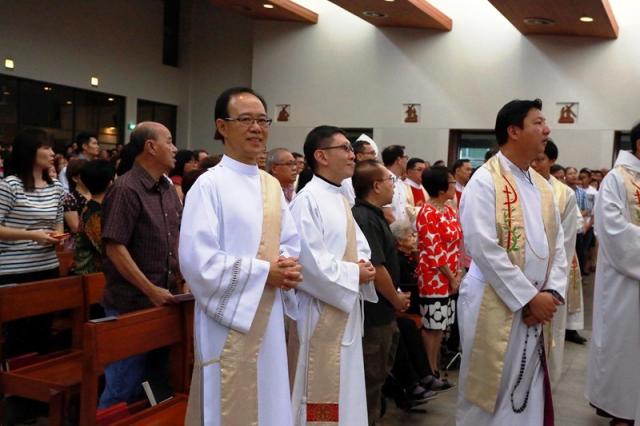
Still searching, he attended a five-week church retreat where he recalled a Franciscan friar asking him to ask himself, “What’s the bigger picture in life?” Shortly thereafter, he happened to meet Fr Colin, who invited him to attend a discernment camp. Attending the camp rekindled his longing to become a priest.
Fr Gregory is going to Boston College in the United States for further studies.
The vocation stories of the two new priests was obtained from Catholic News.

